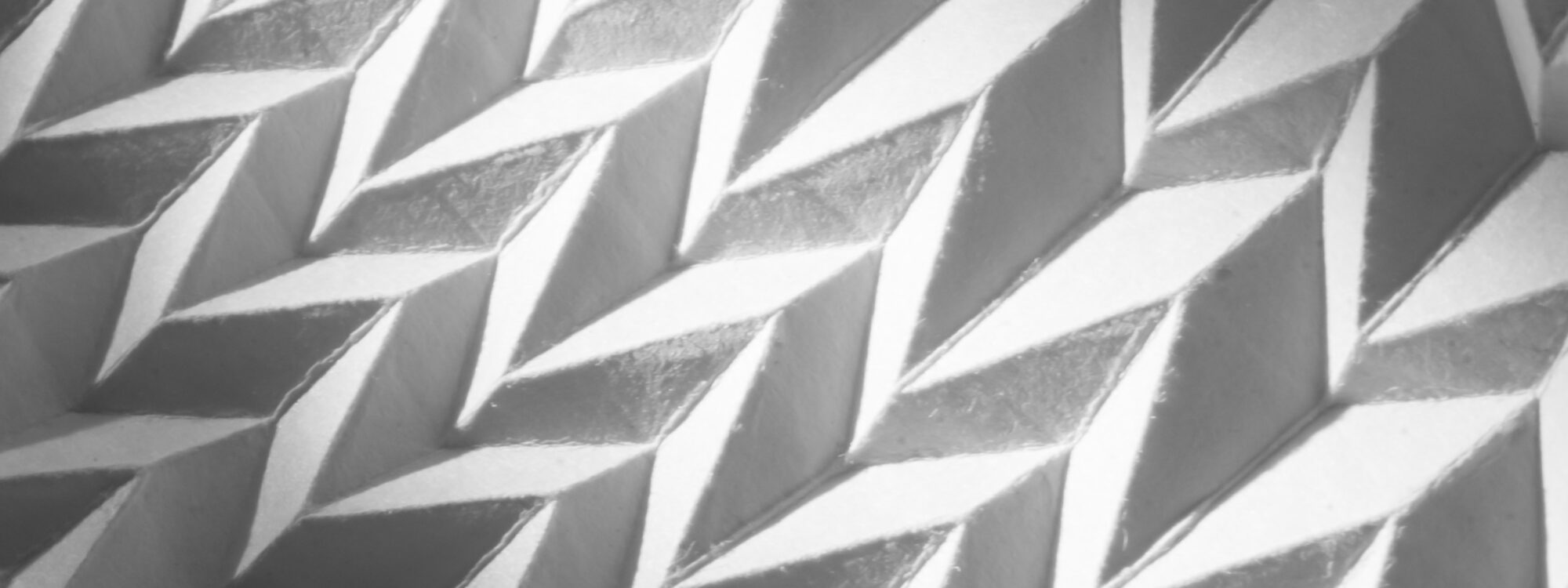Origami at Materials Engineering
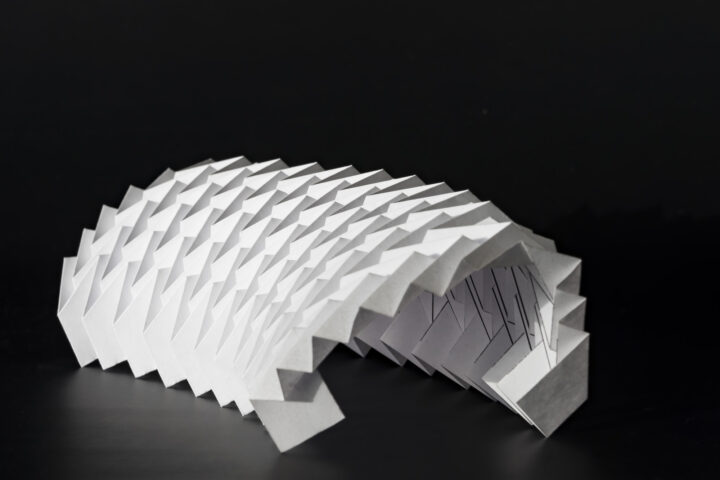
Origami, the art of paper folding, has in recent years gain a lot of interest in the scientific community because of its many interesting properties. Computational origami has helped scientists and engineers to understand the mathematics, physics of origami and the many engineering possibilities this offers. Currently origami designs are used to develop meta-materials with a wide range of properties and thus applications. At Materials Engineering we are using origami designs in several research fields and as a method to implement bio-inspired design into functional applications. Currently origami is used in our research of soft robotics, flexible electronics, water harvesting, bio sensors, solar cells and textiles. Our unit is mainly using designs based on the Miura-ori pattern. The main designer is laboratory engineer Mikael Nyberg who has more than 10 years of experience in designing and folding origami models.
The Miura-ori pattern, despite its simplicity, is very versatile. In its simplest form it can be found in nature, for example in many plant leaves, but it can be used to create complex surface shapes and even 3-D forms. Miura-ori is inherently both flat-foldable and rigid-foldable, both interesting and desirable attributes for many engineering applications. Materials folded using the Miura-ori pattern can also be stretchable, making them very interesting for health technology, flexible electronics and soft robotics. The relative simplicity of the designs makes it possible to use a multitude of different sustainable materials and the designs can be produced using simple roll-to-roll production methods.
Research fields
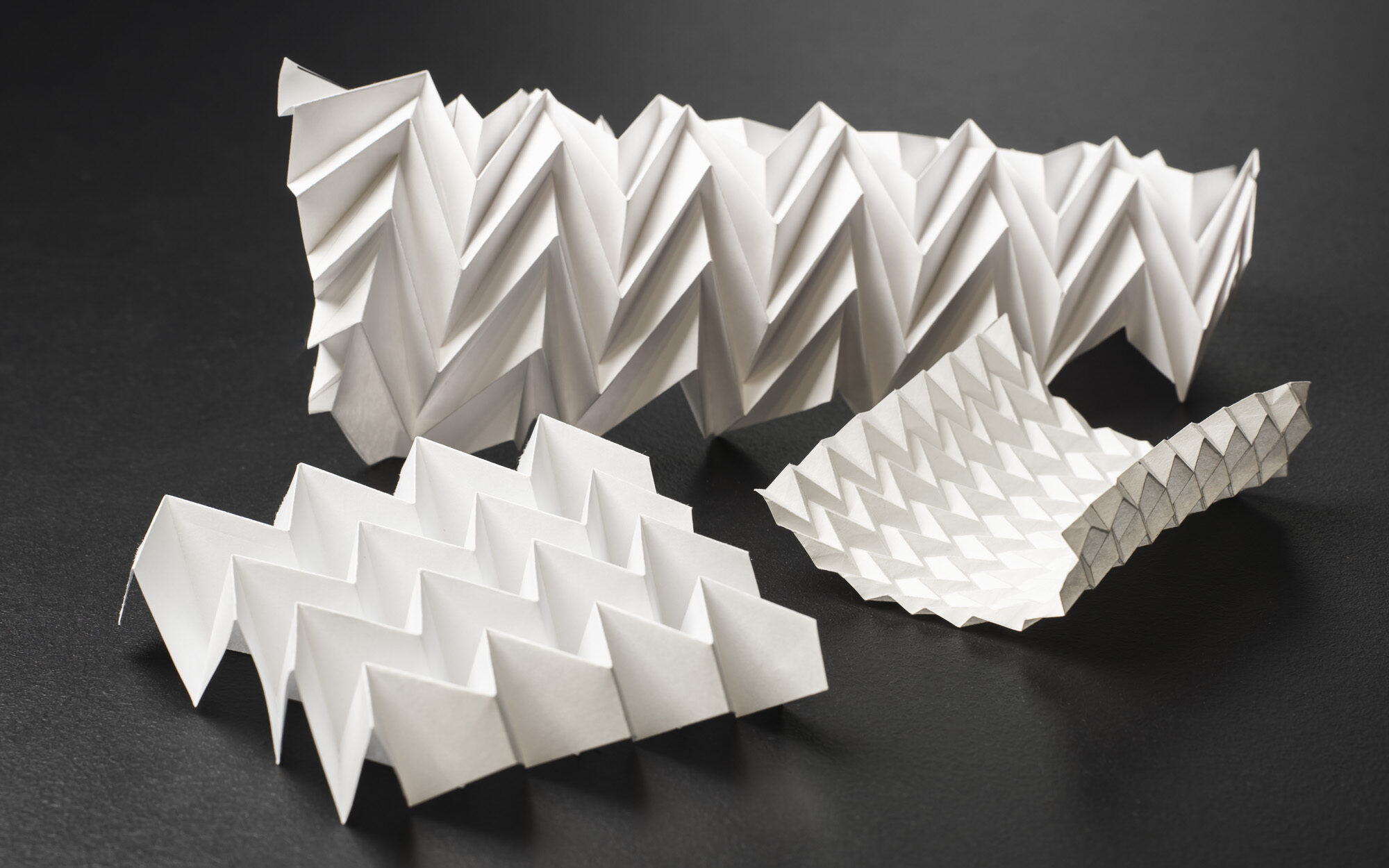
Soft robotics
Miura-based meta-materials can be used for many different aspects in soft robotics. Currently, the Materials for Flexible Devices research group, lead by Prof. Vipul Sharma, is working on developing propulsion mechanisms such as tires or tracks to allow soft robots to move. We’ve also created a retractable wing design. Going forward, we aim to use, and develop new sustainable smart-polymers as the material for the various designs.
We are collaborating with Prof. Thomas Speck and Dr. Falk Tauber and their research group Living, Adaptive and Energy-autonomous Materials Systems at University of Freiburg with printing and analyzing our track designs.
Flexible electronics
Flexible electronics is a fast-growing field of research with huge potential. The inherent flexibility and stretchability, of many origami patterns, such as Miura-ori, make them very interesting for this type of applications. At Materials Engineering we have developed a framework that can be used to design multi-layered surfaces from a single sheet of material. The ability to create curved surfaces is also interesting for applications like artificial skin and different types of sensors.
In the future, research on making micro or even nano scale origami patterns will be conducted. Understand how miniaturizing the patterns affect different properties and developing new techniques to produce nano origami can reveal completely new ways to utilize them.
Water harvesting
Water harvesting from fog is one way to collect clean drinking water in arid areas. Prof. Vipul Sharma, leader of the Materials for Flexible Devices research group, has been improving the efficiency of water harvesting using bio-inspired nano-coated materials. To further improve the efficiency origami based designs that increase the surface area are currently being investigated. The long term goal is to define a design envelope for highly efficient water harvesters. This would enable the creation of both beautiful and functional designs for different environments including urban areas such as parks, roofs and walls.
Bio sensors
Researchers from the Materials in Health Technology group are researching the use of origami patterned substrates to build bio sensor for hormone sensing. PhD student Bahar Mostafiz, under the supervision of Prof. Emilia Peltola, is in the process of researching origami folded nylon discs as the substrate for sensors, making the sensor flexible and increasing its surface area. The ability to fold the sensor flat might also prove useful. Going forward more complex origami designs will be explored to maximize the efficiency and functionality of the sensors.
Textile origami
Materials Engineering is one of the partners in the Beyond e-Textiles project together with five Nordic universities. Within this project we have collaborated with Prof. Delia Dumitrescu from University of Borås to create knitted origami structures. Mikael Nyberg designed several patterns and visited Prof. Dumitrescu in Borås in December 2024 ,where some of these were knitted into textiles. The end result is beautiful and by using different special yarns, like UV-sensing, glow-in-the-dark and thermoplastic, smart textiles not requiring electricity can be created.
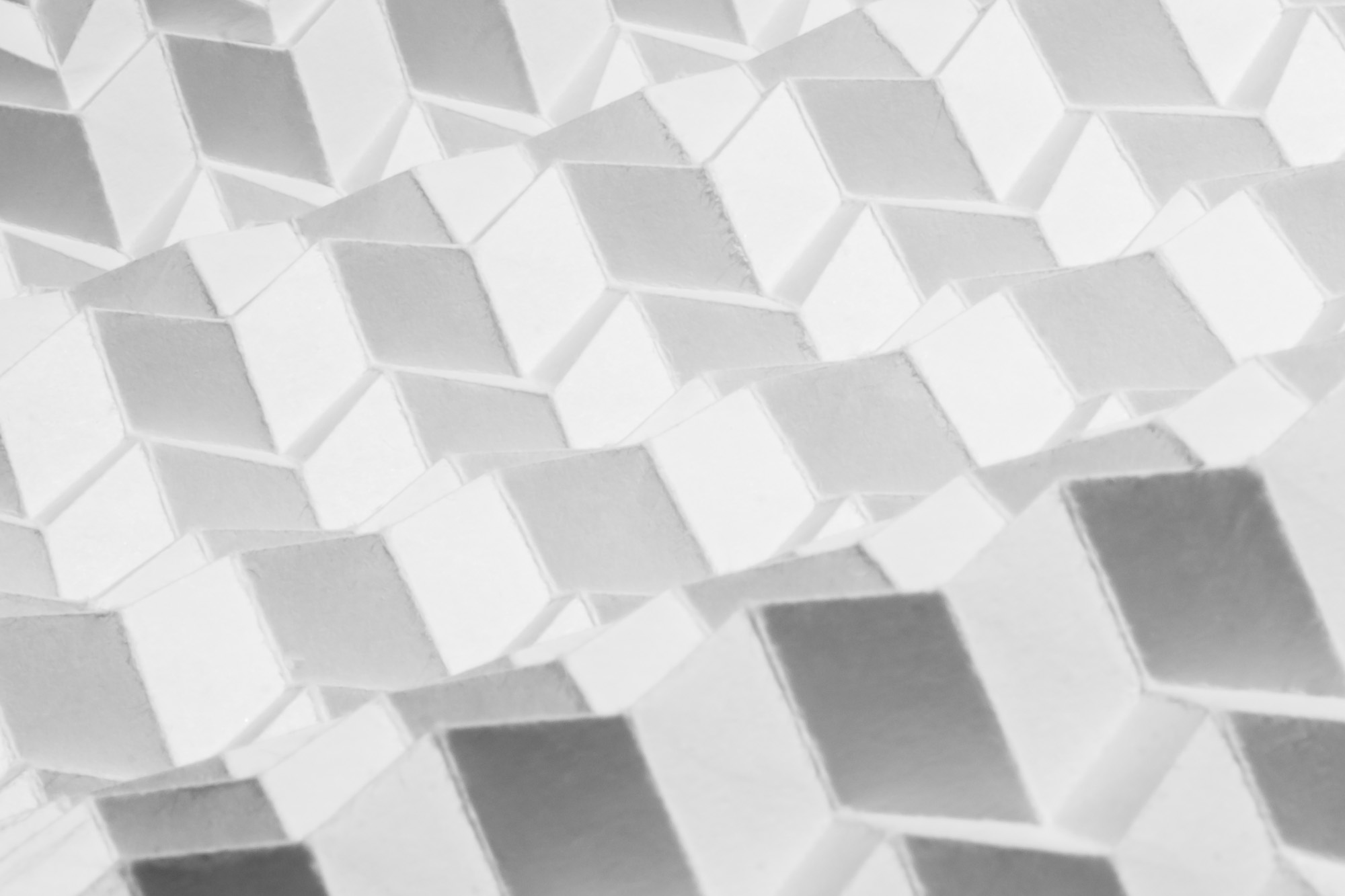
Image gallery
Soft robotics
Shape shifting robot track
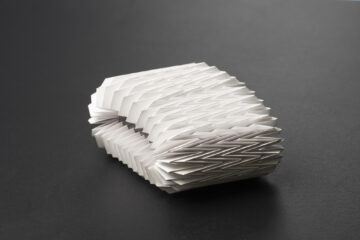
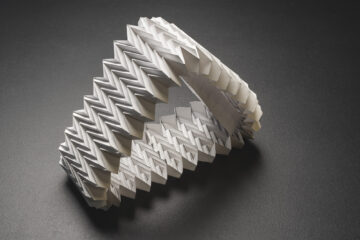
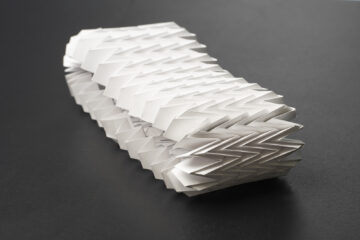

Two-sided robot tyre

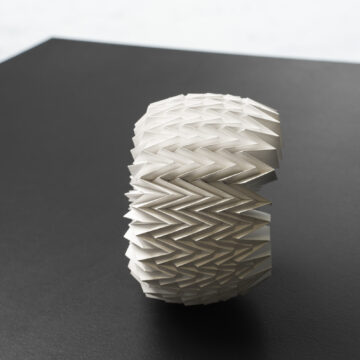

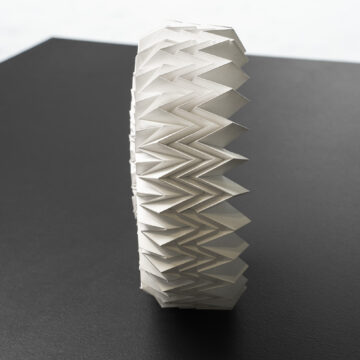
Flexible electronics
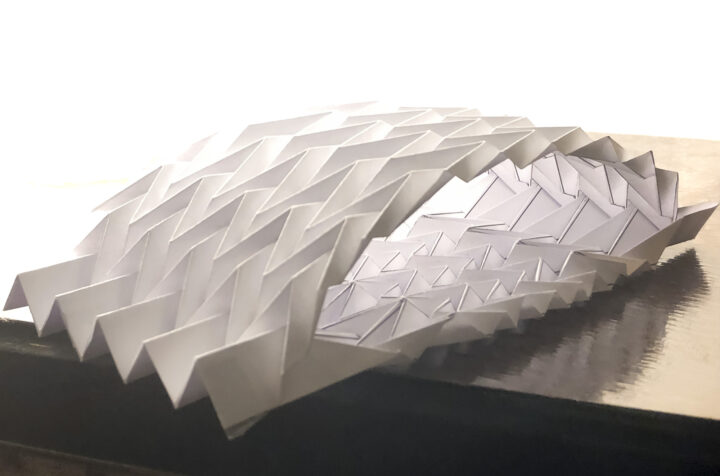
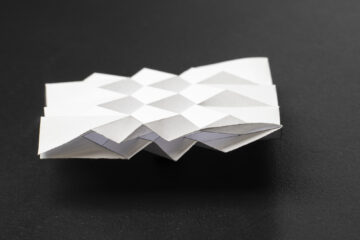
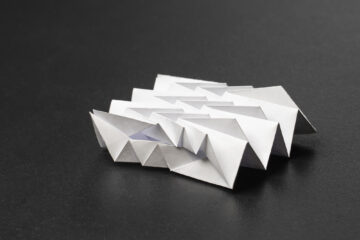
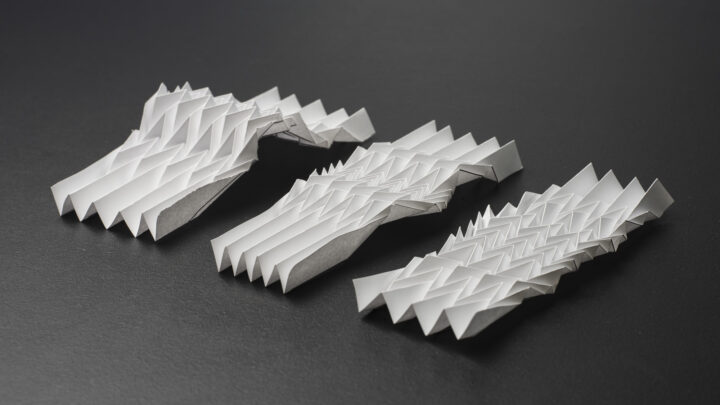
Water harvesting


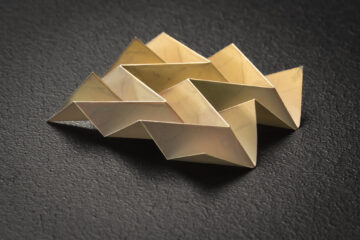

Bio sensors


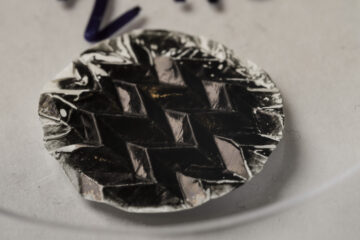
Textile origami

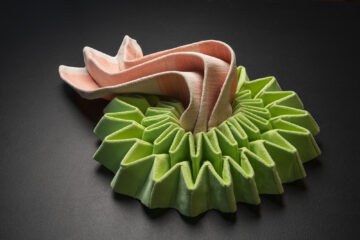

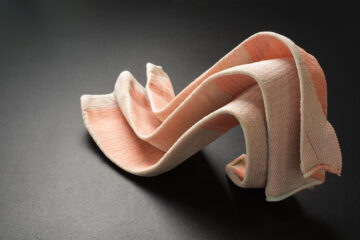
Art and miscellaneous designs
Laboratory engineer Mikael Nyberg did his MSc in computer engineering, writing his thesis on production optimization. Nyberg started his origami journey by exploring origami tessellations hand folding different designs that he found aesthetically appealing. During these explorations he created both some functional designs as well as more artistic pieces.
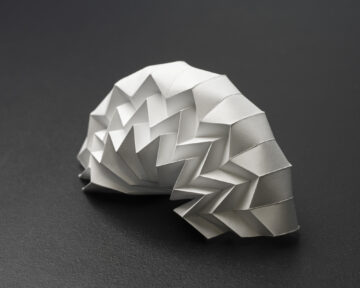
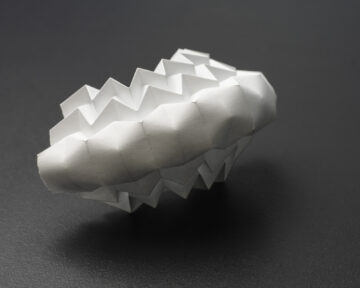

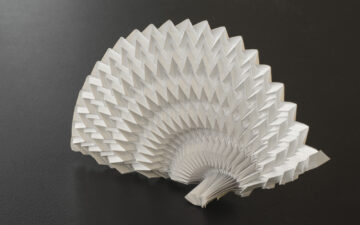
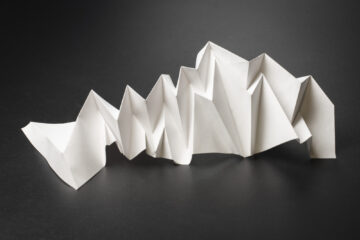
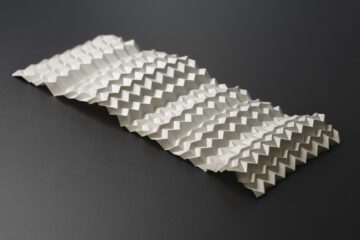
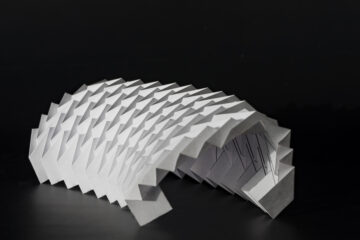
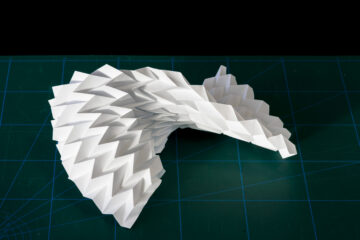
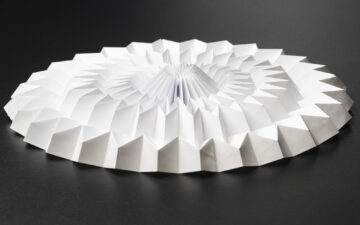
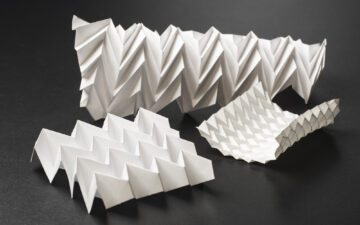

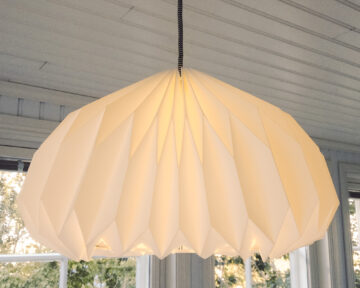

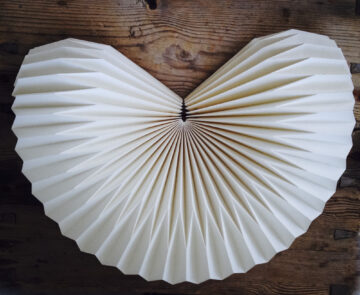
Computational tools
As the potential of origami and the Miura-ori pattern in materials engineering applications became evident it was clear that a more scientific approach was needed. Therefore, research has started to create an optimization model that can be used as a tool to create novel Miura-ori designs with predefined properties. Even though the model development is at an early stage the model has already been proven to work, creating multi-layered designs that are near-rigid- and flat-foldable. The objective going forward is to allow creating designs using a multitude of different design criteria such as surface form, layer thickness, Poisson’s ratio, maximum allowed deflection, partial foldability and more. Automatic creation of input files for 3D-printing and/or mechanical pre-creasing is also planned for the future.
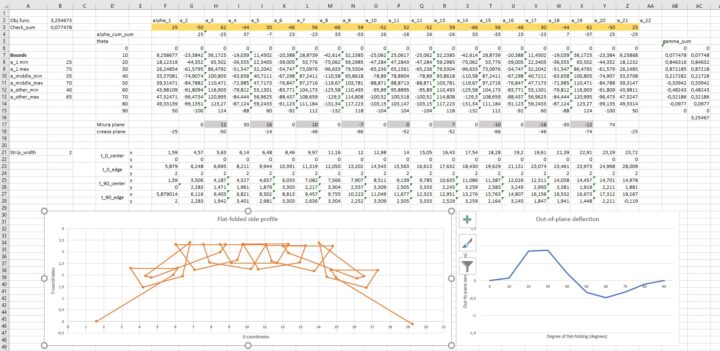
People
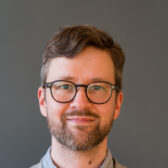
Laboratory Engineer, Materials Engineering

Professor, Head of Materials Engineering, Solar Energy Materials and Systems

Assistant Professor, Materials Engineering,
Materials for Flexible Electronics

Associate Professor, Materials Engineering, Materials in Health Technology

PhD Student, Materials Egnineering, Materials in Health Technology
